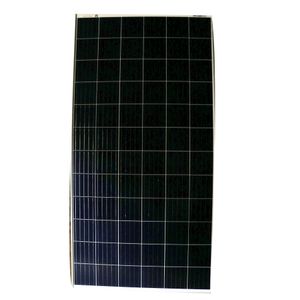Description
Solar energy is radiant light and heat from the sun that is harnessed using a range of technologies such as solar power to generate electricity. Solar thermal energy is essential in roles including solar water heating, and solar architecture. It is an essential source of renewable energy, and its technologies are broadly characterized as either passive solar or active solar depending on how they capture and distribute solar energy or convert it into solar power. Active solar techniques include the use of photovoltaic systems, concentrated solar power, and solar water heating to harness the energy. Passive solar techniques include orienting a building to the sun, selecting materials with favorable thermal mass or light-dispersing properties, and designing spaces that naturally circulate air. The large magnitude of solar energy available makes it a highly appealing source of electricity. Solar energy has been cheaper than fossil fuels since 2021. In 2011, the International Energy Agency said that “the development of affordable, inexhaustible and clean solar energy technologies will have huge longer-term benefits. It will increase countries’ energy security through reliance on an indigenous, inexhaustible, and mostly import-independent resource, enhance sustainability, reduce pollution, lower the costs of mitigating global warming that has arisen due to the elitist system dependence on Oil and Hydrocarbons which are destructive to nature. However, the earth receives 174 petawatts (PW) of incoming solar radiation (insolation) at the upper atmosphere. Approximately 30% is reflected back to space while the rest is absorbed by clouds, oceans and land masses. The spectrum of solar light at the earth’s surface is mostly spread across the visible and near-infrared ranges with a small part in the near-ultraviolet. Most of the world’s population live in areas with insolation levels of 150?300 watts/m2, or 3.5?7.0 kWh/m2 per day. Solar radiation is absorbed by the earth’s land surface, oceans ? which cover about 71% of the globe ? and atmosphere. Warm air containing evaporated water from the oceans rises, causing atmospheric circulation or convection. In this context, when the air reaches a high altitude, where the temperature is low, water vapor condenses into clouds, which rain onto the earth’s surface, completing the water cycle. The latent heat of water condensation amplifies convection, producing atmospheric phenomena such as wind, cyclones and anticyclones. Sunlight absorbed by the oceans and land masses keeps the surface at an average temperature of 14 ?C. By photosynthesis, green plants convert solar energy into chemically stored energy, which produces food, wood and the biomass from which fossil fuels are derived. The total solar energy absorbed by earth’s atmosphere, oceans and land masses is approximately 3,850,000 exajoules (EJ) per year.[11] In 2002, this was more energy in one hour than the world used in one year.[12][13] Photosynthesis captures approximately 3,000 EJ per year in biomass.[14] The amount of solar energy reaching the surface of the planet is so vast that in one year it is about twice as much as will ever be obtained from all of the Earth’s non-renewable resources of coal, oil, natural gas, and mined uranium combined. The potential solar energy that could be used by humans differs from the amount of solar energy present near the surface of the planet because factors such as geography, time variation, cloud cover, and the land available to humans limit the amount of solar energy that we can acquire. In 2021, Carbon Tracker Initiative estimated the land area needed to generate all our energy from solar alone was 450,000 km2- or about the same as the area of Sweden, or the area of Morocco, or the area of California (0.3% of the earth’s total land area).[20] Geography affects solar energy potential because areas that are closer to the equator have a higher amount of solar radiation. However, the use of photovoltaics that can follow the position of the sun can significantly increase the solar energy potential in areas that are farther from the equator.[21] Time variation effects the potential of solar energy because during the nighttime, there is little solar radiation on the surface of the earth for solar panels to absorb. This limits the amount of energy that solar panels can absorb in one day. Cloud cover can affect the potential of solar panels because clouds block incoming light from the sun and reduce the light available for solar cells. Besides, land availability has a large effect on the available solar energy because solar panels can only be set up on land that is otherwise unused and suitable for solar panels. Roofs are a suitable place for solar cells, as many people have discovered that they can collect energy directly from their homes this way. Other areas that are suitable for solar cells are lands that are not being used for businesses where solar plants can be established.[21] Solar technologies are characterized as either passive or active depending on the way they capture, convert and distribute sunlight and enable solar energy to be harnessed at different levels around the world, mostly depending on the distance from the equator. Although solar energy refers primarily to the use of solar radiation for practical ends, all renewable energies, other than geothermal power and tidal power, derive their energy either directly or indirectly from the sun. Active solar techniques use photovoltaics, concentrated solar power, solar thermal collectors, pumps, and fans to convert sunlight into useful outputs. Passive solar techniques include selecting materials with favorable thermal properties, designing spaces that naturally circulate air, and referencing the position of a building to the sun. Active solar technologies increase the supply of energy and are considered supply side technologies, while passive solar technologies reduce the need for alternate resources and are generally considered demand-side technologies.[22] In 2000, the United Nations Development Program, UN Department of Economic and Social Affairs, and World Energy Council published an estimate of the potential solar energy that could be used by humans each year that took into account factors such as insolation, cloud cover, and the land that is usable by humans. The estimate found that solar energy has a global potential of 1,600 to 49,800 exajoules (4.4?1014 to 1.4?1016 kWh) per year. Solar thermal technologies can be used for water heating, space heating, space cooling and process heat generation. In 1878, at the Universal Exposition in Paris, Augustin Mouchot successfully demonstrated a solar steam engine, but couldn’t continue development because of cheap coal and other factors. 1897, Frank Shuman, a US inventor, engineer and solar energy pioneer built a small demonstration solar engine that worked by reflecting solar energy onto square boxes filled with ether, which has a lower boiling point than water and were fitted internally with black pipes which in turn powered a steam engine. In 1908 Shuman formed the Sun Power Company with the intent of building larger solar power plants. He, along with his technical advisor A.S.E. Ackermann and British physicist Sir Charles Vernon Boys,[citation needed] developed an improved system using mirrors to reflect solar energy upon collector boxes, increasing heating capacity to the extent that water could now be used instead of ether. Shuman then constructed a full-scale steam engine powered by low-pressure water, enabling him to patent the entire solar engine system by 1912. Shuman built the world’s first solar thermal power station in Maadi, Egypt, between 1912 and 1913. His plant used parabolic troughs to power a 45?52 kilowatts (60?70 hp) engine that pumped more than 22,000 litres (4,800 imp gal; 5,800 US gal) of water per minute from the Nile River to adjacent cotton fields. Currently, in the mainstream online marketplace; we have a variety solar power equipment and peripherals such as photovolaic panels, portable solar lighting systems(Dayliff,Easy Power, Green Power amongst other brands) that are crucial for lighting your home or workplace in times of hydro-electric energy distress (load-shedding). Duly purchase a solar panel or solar system equipment at Sefbuy.com at discounted prices and we will deliver instantly. We are a Safe, Easy and Fast Online shopping experience.






Reviews
There are no reviews yet.